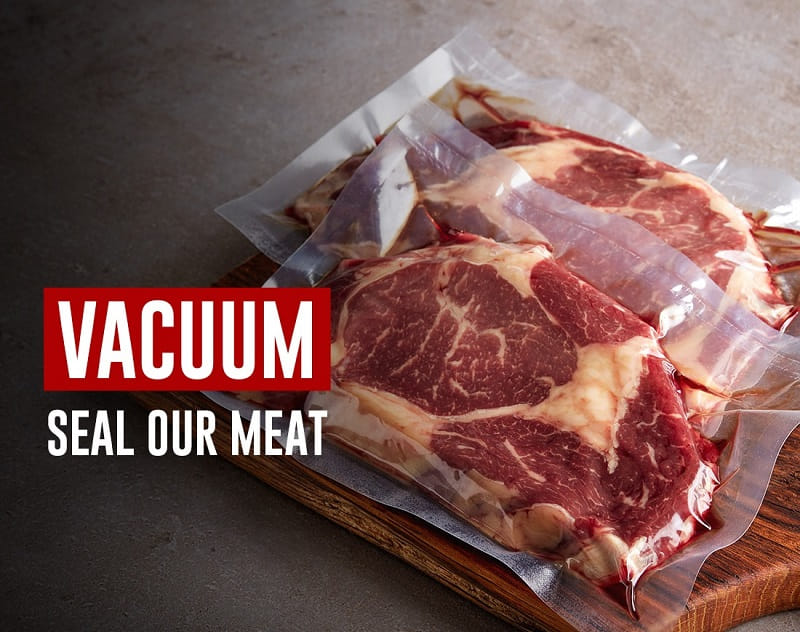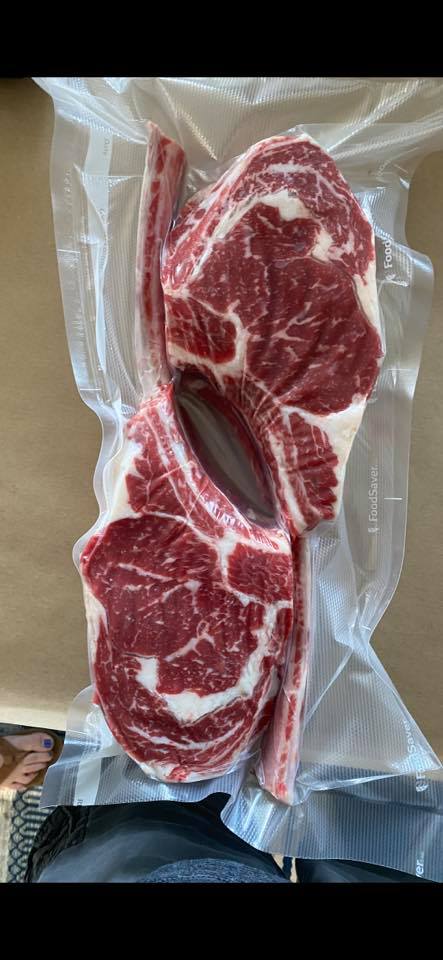If you’re wondering how to determine the freshness of vacuum-sealed meat, understanding the signs of spoilage is crucial. Recognizing the indications of spoiled vacuum-sealed meat can help you avoid consuming unsafe food and ensure you enjoy your meals without any concerns. In this guide on “How To Tell If Vacuum Sealed Meat Is Bad,” we will explore the key indicators that will help you confidently assess the quality of vacuum-sealed meat before preparing it for your next meal.
How To Tell If Vacuum Sealed Meat Is Bad
Visual Cues (Package, Meat)
When determining if vacuum-sealed meat is bad, one of the first things to look for is visual cues. Start by examining the packaging. If you notice any signs of damage, such as tears, punctures, or bulges, it could indicate that the seal has been compromised and the meat may have been exposed to air or contaminants. Look for expiration dates or “best by” dates on the package.
Next, please take a close look at the meat itself. Notice any color changes. It is likely spoiled if the meat appears discolored, with a gray or greenish tint. Additionally, watch for any visible mold spots; these are clear spoilage indicators.
Remember to trust your instincts. If something about the packaging or the appearance of the meat seems off, it’s better to be safe than sorry. Always discard any vacuum-sealed meat that shows signs of visual spoilage to avoid the risk of foodborne illness.
Sensory Cues (Smell, Touch)

When determining if vacuum-sealed meat is bad, using your senses of smell and touch can provide valuable information. The sense of smell is often the first indicator of spoilage. If you catch a strong, unpleasant odor from the package, it’s a clear sign that the meat has gone bad. Trust your instincts – if the smell seems off or rancid, it’s best to discard the meat to avoid any potential health risks.
Another sensory cue to consider is touch. Give the meat a gentle squeeze or press with your fingers. Fresh meat should feel firm and springy. It is likely spoiled if the meat feels excessively soft, mushy, or slimy. The texture change is a result of bacterial growth and decomposition.
Remember, your senses are powerful tools in evaluating the quality and safety of vacuum-sealed meat. If there are any doubts or indications of spoilage, it’s better to err on the side of caution and not consume the meat. Stay vigilant and trust your senses to enjoy fresh and safe meat.
Additional Checks
Apart from visual cues, you can perform a few additional checks to determine if vacuum-sealed meat is bad. These checks can further confirm the spoilage of the meat and ensure your safety. Here are some additional checks I recommend:
- Check for discoloration: Examine the meat for any unusual color changes. If you notice any gray, green, or dark spots on the surface, it could be a sign of spoilage.
- Monitor the vacuum seal: Inspect the vacuum-sealed packaging for any signs of bulging or leaking. If the package appears swollen or air is escaping, it indicates that the seal has been compromised, allowing bacteria to enter.
- Examine the liquid: If excessive liquid or moisture is inside the package, it could be a sign that the meat has started to decompose. This can be an indicator of spoilage.
- Check the expiration date: Always check the expiration date on the packaging. If the meat has passed its expiration date, it is better to err on caution and discard it.
Remember, these additional checks can help determine if vacuum-sealed meat is bad. If you notice any of these signs, it is best to avoid consuming the meat to prevent any potential health risks. Trust your instincts and prioritize your safety.
Why Vacuum Sealed Meat Is Prone To Spoilage?

Vacuum-sealed meat is more susceptible to spoilage due to the absence of oxygen inside the packaging. While the lack of oxygen helps to extend the meat’s freshness, it also creates an ideal environment for certain types of bacteria and microorganisms to thrive. These microorganisms can cause the meat to spoil and potentially lead to foodborne illnesses if consumed.
The vacuum-sealing process removes air from the packaging, preventing the growth of aerobic bacteria that require oxygen to survive. However, some bacteria, such as Clostridium botulinum, can survive in low-oxygen environments and produce toxins that can cause botulism.
Additionally, improper sealing or storing of vacuum-sealed meat can result in a compromised vacuum seal, allowing oxygen and bacteria to enter the package. This can accelerate the spoilage process and increase the risk of contamination.
Another factor that can contribute to spoilage is temperature fluctuation. If the vacuum-sealed meat is exposed to temperature changes, such as thawing and refreezing, it can promote bacterial growth and deteriorate the quality of the meat.
Handling, storing, and sealing vacuum-sealed meat properly is crucial to minimize spoilage risk. Following proper food safety practices and guidelines can help ensure the freshness and safety of vacuum-sealed meat.
Tips For Properly Sealing And Storing Vacuum Sealed Meat
When properly sealing and storing vacuum-sealed meat, remember a few key tips. These practices will help maintain the freshness and safety of your meat for longer periods:
- The sealing process: Ensure a proper seal by carefully following the instructions provided with your vacuum sealer. Ensure the bag is completely sealed and free of any holes or gaps that allow air or bacteria to enter.
- Use high-quality bags: Invest in high-quality vacuum-sealing bags designed for food preservation. These bags are typically thicker and more durable, providing extra protection against leakage and contamination.
- Freeze at the right temperature: If you plan to freeze the vacuum-sealed meat, set your freezer temperature to 0°F (-18°C) or lower. This will help maintain the quality and prolong the shelf life of the meat.
- Label and date: Always label the vacuum-sealed bags with the type of meat and the date of sealing. This will help you track how long the meat has been stored and ensure you consume it within a safe timeframe.
- Store in a cool, dark place: Store the vacuum-sealed meat in a refrigerator or freezer away from direct sunlight and heat sources. This will minimize temperature fluctuations and reduce the risk of bacterial growth.
By following these tips, you can maximize the shelf life of your vacuum-sealed meat while ensuring its safety and quality when consumed.

Hey there, I’m Robert Bolduc, the owner of the Blast From The Past Dinner Restaurant, and I’m excited to welcome you to our cozy corner of nostalgia. At our restaurant, we’ve created a unique experience that takes you back in time to the good old days, where classic comfort food meets retro charm.
As you step through the doors of our restaurant, you’ll be transported to a bygone era, where the jukebox plays your favorite hits from the ’50s and ’60s, and the décor exudes vintage flair. Our aim is to not just serve food, but to provide an immersive journey into the past, where every meal is a trip down memory lane.
So, if you’re ready to take a trip back in time and indulge in the flavors of yesteryear, then join us at Blast From The Past Dinner Restaurant. We can’t wait to share our love for the past with you.
